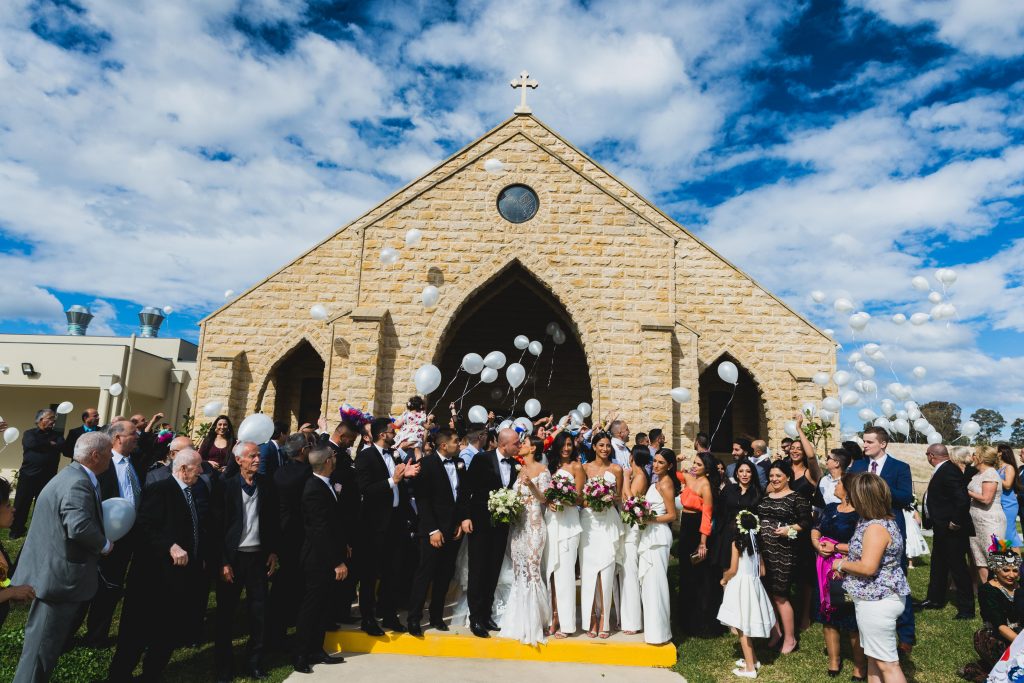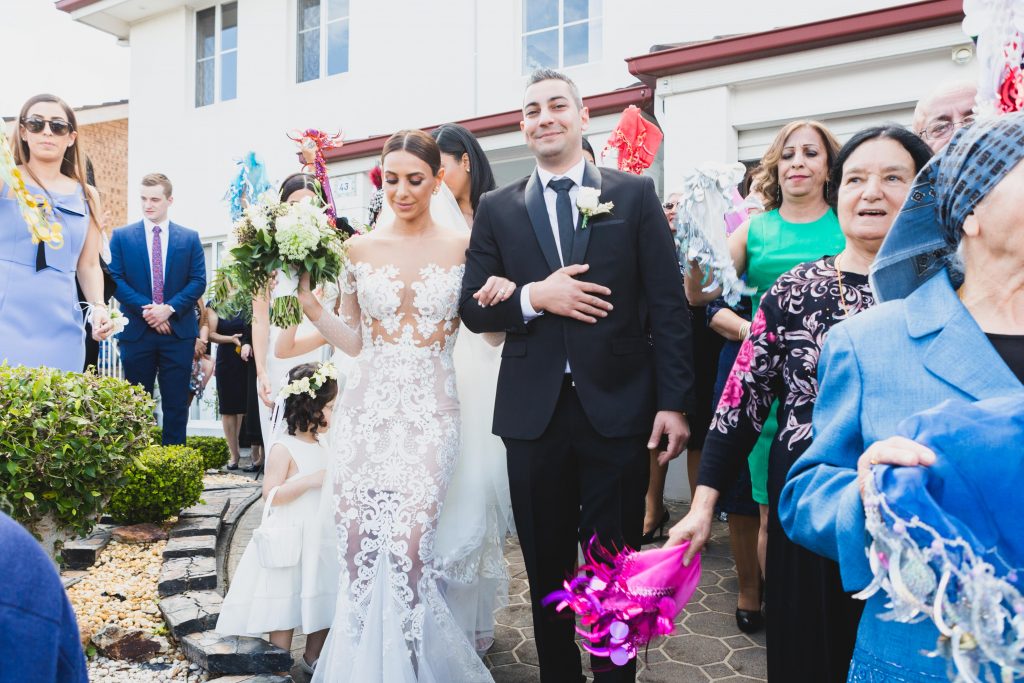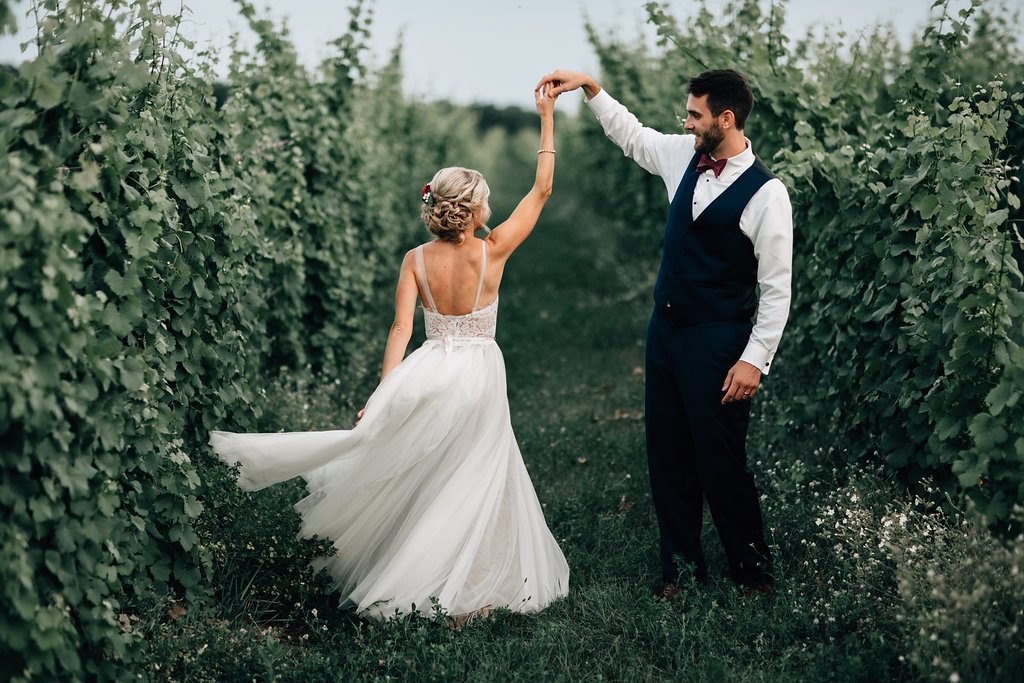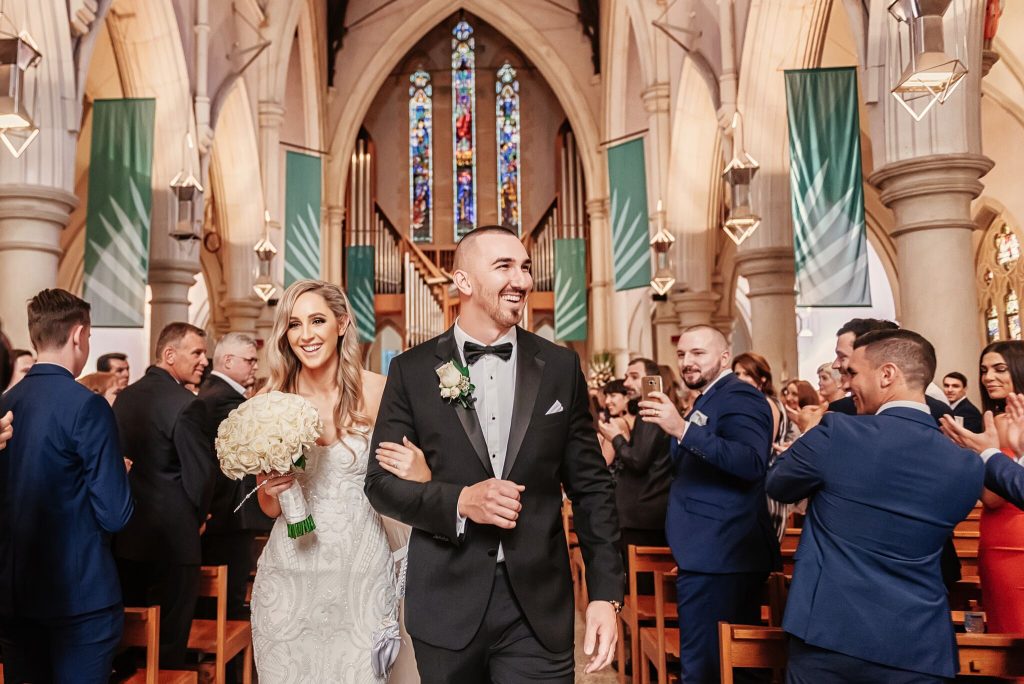The Assyrian people belong to one of the oldest civilisations in the world, one that dates back to 2500 BC. As an ancient culture, many of today’s Assyrian marriage rituals have been influenced and shaped by the changing years, although they remain steeped in tradition.
Table of Contents
Here are 7 Assyrian wedding traditions you may not know about.
A Sydney Wedding Filled With Bright Florals by Yazzen Photography
Sewing The Honeymoon Blanket
A week before the wedding, a large honeymoon blanket is made by female relatives when they gather at the bride’s home. The needle is passed to each woman to ensure that every one is involved in the process, and a dance is done by younger women while the older women sing.
Shaving And Washing The Groom
Before the wedding, the groom’s male relatives gather at his house to cut his hair and shave his face. The groom is then scrubbed from head to toe to symbolise the cleansing of any evilness that may be present, which is later followed by the groom taking a shower.
Henna
The night before the wedding, relatives will go to the bride’s home for a henna ritual. This used to be exclusive to female relatives, however it is commonly a mixed affair these days. During the ritual, the bride and groom dip their little fingers in a bowl of henna. Their fingers are then connected and tied together by a piece of ribbon. Often, whoever holds the bowl of henna then does a traditional Assyrian dance.
The Groom’s Family Picks Up The Bride
While the groom is at the church with his groomsmen, his family will head over the bride’s house in a large singing and dancing procession. Here, the bride gives away little corsages to the family and takes photos with them, much the same as the groom when he is preparing at his own house.
A Sydney Wedding Filled With Bright Florals by Yazzen Photography
The Bride Is Held For Ransom In Her Home
Usually, a male relative of the bride will close the doors of her home and refuse to let the bride leave without receiving payment from the groom’s family. An amount is requested and must be met before the bride can leave for the church.
The Couple Are Blessed By A Priest
Known as burakha, the couple are given an hour-long blessing by the priest within the church. The practices involves differ between villages and community groups, however some common acts include placing a pin in the shape of a cross on the groom’s back, pinching the groom with a needle to protect him from evil spirits, and using the sound of cutting scissors to ward of evil spirits. As the couple leave the church, they are often showered with sweets, rice, and sometimes even coins.
Dancing With The Yalekhta and Kopala
During the wedding reception, guests dance traditional Assyrian dances, including khigga, where everyone holds hands and dances in a circle. Assyrians use a beaded handkerchief with bells on it, called yalekhta, and a cane covered in fabric and pearls, called kopala, to dance with as the bells make noise when shaken. Often, whoever leads the khigga holds the kopala.



